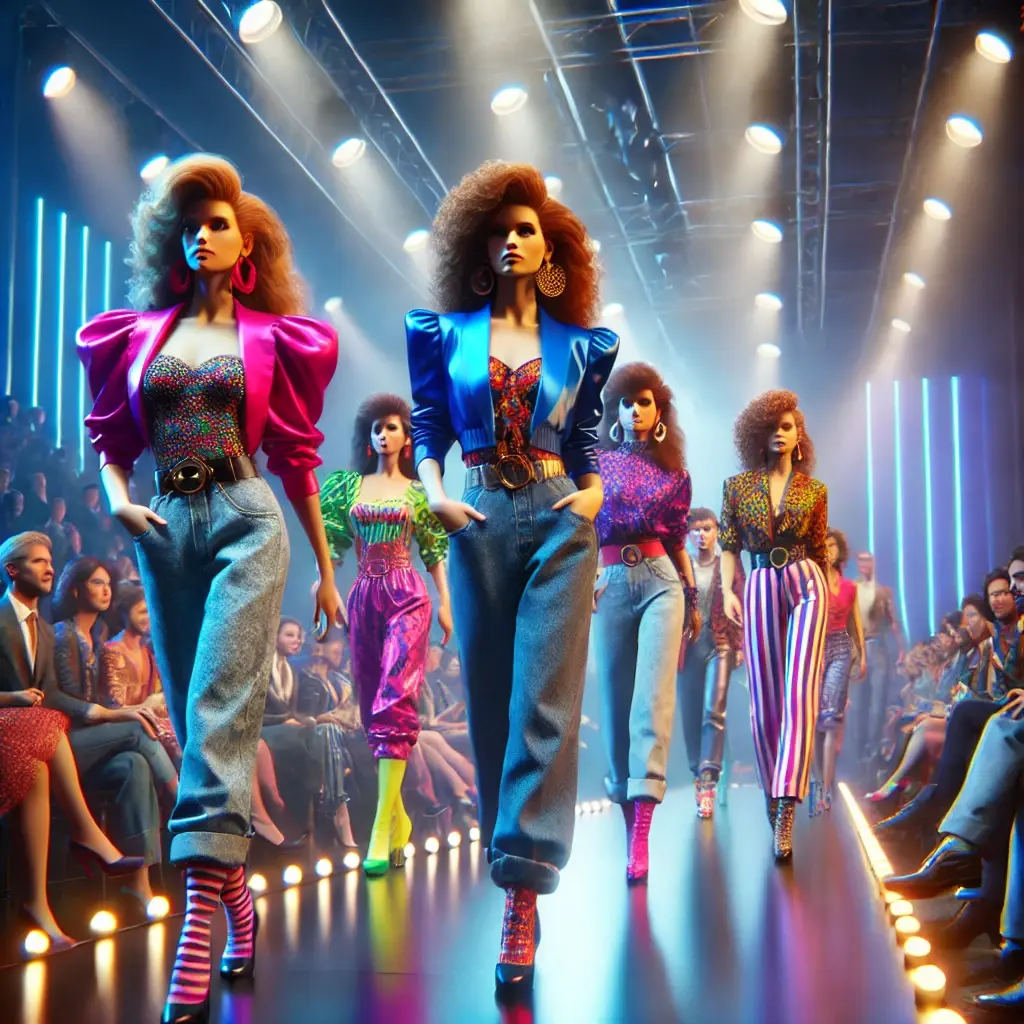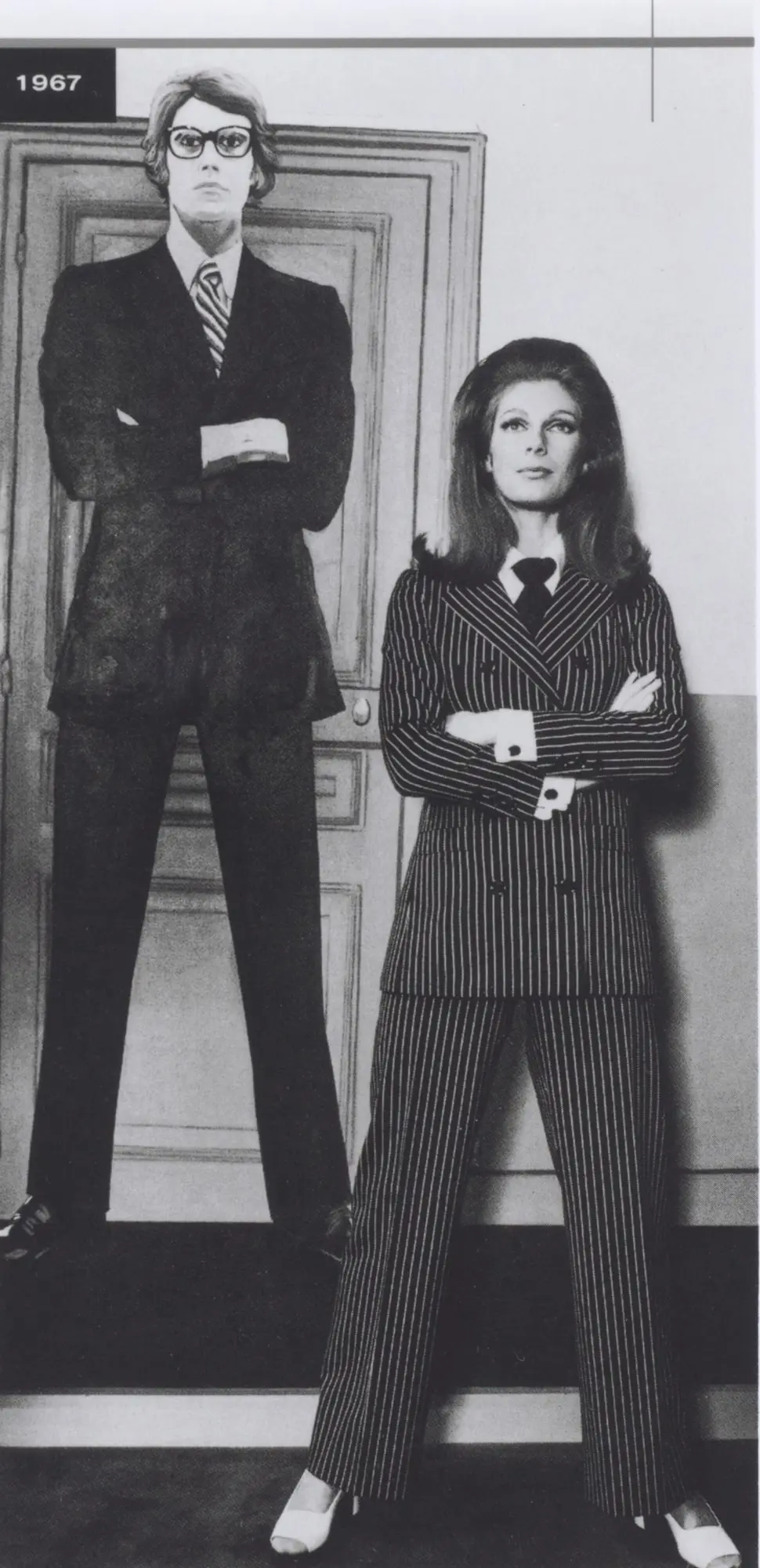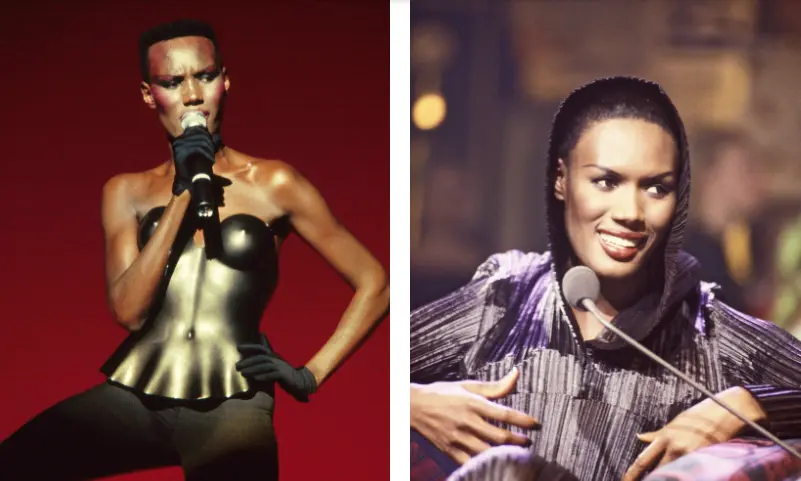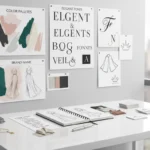
The 1980s brought a fashion revolution defined by bold choices, powerful silhouettes, and vibrant colors. In women’s fashion, this period marked a significant shift, with styles reflecting empowerment and changing societal roles. The fashions of the 1980s, including shoulder pads, big hairstyles, and lavish accessories, set this period apart as a distinct era in fashion history. Compared to other decades, 1980s styles had a lasting influence on later fashions and trends. Women embraced daring looks, from Madonna’s rebellious outfits to the structured elegance of the power suit Ralph Lauren 1980 trend. The era combined high fashion with street style, creating iconic 1980s fashion moments that remain unforgettable. The influence of 1980s women’s fashion extended beyond clothing, shaping makeup, accessories, and attitudes toward self-expression.
Introduction to the Era: Setting the Stage for 1980s Fashion
The 1980s marked a turning point in women’s fashion, as the decade ushered in a new era of confidence, ambition, and unapologetic style. With more women entering the corporate world than ever before, fashion became a powerful tool for self-assertion and professional presence. The concept of power dressing took center stage, with the power suit—featuring sharp shoulder pads, a cinched waist, and a sleek pencil skirt—emerging as the ultimate symbol of authority and sophistication. This movement was not just about clothing; it was about making a statement in boardrooms and beyond.
Designers like Giorgio Armani, Claude Montana, and Thierry Mugler reimagined the female silhouette, introducing bold colors, padded shoulders, and luxurious fabrics that exuded both strength and femininity. The influence of popular culture was undeniable, as television dramas like “Dynasty” and “Dallas” brought power dressing into living rooms across the globe. Characters such as Joan Collins’ Alexis Carrington and real-life icons like Princess Diana became the faces of this new fashion style, inspiring women everywhere to embrace wide shoulders, structured jackets, and knee length skirts. The 1980s was a decade defined by movement—both social and sartorial—where fashion became a reflection of women’s evolving roles and aspirations.
Influence of Designers: Shaping the Decade’s Style
The creative vision of 1980s designers played a pivotal role in defining the era’s fashion landscape. Giorgio Armani revolutionized the power suit, introducing streamlined tailoring and understated elegance that became synonymous with success in the corporate world. His designs, often featuring padded shoulders and a refined silhouette, set the standard for power dressing and inspired countless working women to adopt this commanding look.
Meanwhile, Claude Montana brought a sense of drama and vibrancy to women’s fashion, with his signature use of bold colors, strong shoulders, and sculpted waists. His collections celebrated the female form while pushing the boundaries of style, making every outfit a statement. Thierry Mugler took power dressing to new heights with his futuristic, architectural approach—his suits and dresses were works of art, often adorned with intricate embroidery and innovative fabrics that captured the spirit of the decade.
Other influential designers, such as Karl Lagerfeld and Yves Saint Laurent, contributed their own unique touches, incorporating elements like lace, gold chains, and luxurious textiles into their collections. Their work was showcased in the pages of Vogue and on the runways of the world’s fashion capitals, while exhibitions at the Metropolitan Museum highlighted the artistry and influence of 1980s fashion. Together, these designers transformed the decade into a period of bold experimentation, where power, creativity, and self-expression reigned supreme.
Madonna 1980s Outfits: A Pop Star’s Fashion Statement
Madonna ruled the 1980s with her music and fearless fashion. She blended punk, glam, and streetwear, creating a style that defined pop culture. Her signature looks included lace tops, t shirts layered with fishnet gloves, tulle skirts, and layered jewelry.
Fans copied her bold colors and eye-catching ensembles, making her one of the ultimate fashion icons of the decade. Many of these items were worn by fans hoping to capture her unique style. Getty Images captured many of her legendary fashion moments, solidifying her influence in 1980s women’s fashion.

Madonna’s 1980s Look – businessinsider.com
Madonna’s style changed with each album. She used corsets, studded belts, and leather jackets. This pushed the limits of pop culture fashion.
Her music videos showcased an ever-changing wardrobe that became instantly recognizable. Her clothes set trends and inspired countless fans. From the “Like a Virgin” wedding dress to the edgy “Material Girl” glam, her outfits defined a generation. Teenage girls layered lace, wore oversized bows, and styled their hair with crimped waves, emulating the pop star’s signature aesthetic. Madonna didn’t just follow trends—she set them, proving that fashion could be a powerful tool of self-expression.
Power Suits & Office Chic: The Rise of Structured Fashion
The 1980s introduced the career woman’s wardrobe, dominated by structured power suits with broad shoulder pads. Designers like Ralph Lauren and Yves Saint Laurent led the trend, ensuring women exuded confidence in the workplace. High-waisted trousers and fitted blazers completed the look, creating a commanding presence. The power suit became a symbol of ambition and strength, empowering women to take on professional roles with authority. In the corporate world, these trends were most visible as women asserted themselves in professional environments. Power dressing ensembles often included knee length skirts, pencil skirts, and other skirt styles, paired with tailored jackets. Shoulder pads and precise tailoring emphasized the waist and shoulders, creating a commanding silhouette. The neckline of blouses and jackets played a crucial role in balancing femininity and authority, often featuring elegant details.
Television shows like Dynasty and Working Girl popularized the image of the strong, independent woman in a power suit. Shoulder pads became essential, reinforcing a broader, more authoritative silhouette. The popularity of these trends in the 1980s was fueled by celebrities and designers who shaped the era’s fashion style. Wide shoulders became a defining feature, intended to project power and confidence, and the overall concept of power dressing was to create a look that signaled authority and success for working women in the corporate world. Margaret Thatcher, and especially Prime Minister Margaret Thatcher, became icons of the power suit and wide shoulders, often seen in tailored skirt suits. The pussy bow blouse emerged as a classic element of 1980s office fashion, frequently paired with suits for a polished, feminine touch. Blouses made from luxurious fabric such as silk, crepe de chine, and polyester satin foulard, often featured neck wrappings or cravat effects, adding romantic and intricate details to the look.

YSL pantsuit 1967 – museeyslparis.com
The look extended beyond the office, making its way into evening wear, where tailored jackets and structured dresses continued the trend. Evening wear incorporated power dressing elements, with wide-shouldered jackets and bold silhouettes styled in luxurious fabrics. Women accessorized their outfits with gold jewelry, oversized earrings, and statement handbags, creating a luxurious yet professional aesthetic. Accessory choices, including costume jewelry and gold chains, played a significant role in highlighting femininity and authority, while also serving as key elements of the overall look. The use of strong colors such as pink, fuchsia pinks, royal blue, sea greens, and purples in power suits and accessories further defined the era’s lavish style. Influential designers like Giorgio Armani, Claude Montana, and Thierry Mugler shaped the power dressing movement with their innovative jacket designs and structured silhouettes, each contributing to the intended impact of confidence and empowerment. The success of these styles reflected the growing presence of working women in the corporate world and the evolving concept of femininity in professional attire.
Denim and Leather: The Rebellious Edge
Acid-washed jeans, oversized denim jackets, and leather jackets became must-haves in 1980s clothing style. These pieces, often paired with band tees and studded accessories, captured the era’s rebellious spirit. Decorative embroidery was also popular on denim jackets and jeans, adding unique texture and visual interest. Grace Jones and Michael Jackson rocked edgy fashion statements, influencing mainstream styles. Women mixed feminine and masculine elements, embracing oversized silhouettes and tough textures for an effortlessly cool look.
Leather jackets were more than just a fashion statement—they symbolized rebellion and rock ‘n’ roll culture. From punk-inspired studs to the sleek biker look, leather became a staple in both casual and high fashion. Denim wasn’t just a staple—it was a movement. Acid-washed jeans, ripped styles, and high-waisted designs became everyday essentials, often paired with cropped tops or slouchy sweaters for a relaxed yet trendy look.

Grace Jones’ 1980s Looks – vogue.com
Makeup and Accessories: Bigger, Brighter, Bolder
1980s makeup brands catered to a love for color and drama. Bright blue eyeshadow, neon blush, and glossy red lips were staples. Women complemented these bold choices with chunky accessories.
Large belts, statement earrings, and chunky bangles added flair, while headbands and scrunchies brought playfulness to everyday outfits. Statement sleeves, especially puffed sleeves, were a defining feature of 1980s fashion, contributing to the era’s bold and structured silhouettes. The combination of dramatic makeup and over-the-top accessories defined 1980s ladies fashion.
Women embraced heavily contoured cheekbones, shimmering highlighter, and glittery eyeshadows to create standout looks. The “more is more” philosophy applied to both beauty and fashion, with layered necklaces, rhinestone-studded belts, and oversized sunglasses making frequent appearances. Hair followed the same bold approach—big hair ruled the decade, with teased volume, perm curls, and gravity-defying styles dominating the scene.
Fancy Dress and Themed Parties: Celebrating 1980s Fancy Dress Womens Style
Themed parties and costume events embraced 1980 attire, showcasing the best of the decade’s trends. Women dressed as pop stars, punk rockers, or glam queens. Leg warmers, brightly colored tights, and off-the-shoulder tops made frequent appearances at events. The demand for iconic 1980s fancy dress womens outfits skyrocketed, proving that the era’s fashion had a lasting impact on party culture.
Workout fashion played a key role in party costumes, with neon leotards, sweatbands, and leg warmers becoming go-to choices for 80s-themed events. Many partygoers channeled movie and TV icons, dressing as Flashdance dancers, Dallas divas, or The Breakfast Club rebels. Whether punk, preppy, or pop-inspired, fancy dress parties provided the perfect excuse to relive the vibrant energy of 1980s style.
The Influence of 1980 Fashion Magazines
Fashion magazines played a crucial role in spreading 1980 clothing style trends. Publications like Vogue and Harper’s Bazaar featured supermodels in power suits, oversized blazers, and high-waisted skirts. Getty Images captured runway moments that shaped fashion narratives. Women turned to these magazines for inspiration, embracing new styles that blended luxury with everyday wear.
The rise of supermodels like Cindy Crawford, Naomi Campbell, and Linda Evangelista gave the 1980s its glamorous edge. These women graced magazine covers in bold prints, neon fabrics, and high-fashion sportswear. Editorials featured avant-garde styling, setting trends that everyday women adapted into their wardrobes. Magazines also introduced readers to international designers, elevating the global influence of 1980s fashion.
Princess Diana: The Royal Fashion Icon
Princess Diana’s fashion choices influenced 1980s women’s fashion worldwide. She combined elegance with modern trends, wearing structured blazers, flowing dresses, and eye-catching accessories. Her love for bold colors, high-waisted silhouettes, and statement-making coats made her a true fashion icon. Whether in casual denim or formal gowns, Diana’s outfits remain legendary in the history of 1980s fashion.
Diana’s ability to blend royal sophistication with contemporary style made her a favorite among designers. She embraced trends like polka dots, ruffled collars, and pastel suits, bringing a softer approach to the power dressing movement. From her wedding gown’s dramatic train to her casual sweater-and-jeans ensembles, every outfit Diana wore set trends that women around the world eagerly followed.

Princess Diana, in Munich, November 1987 – vogue.com
Conclusion: The Lasting Impact of 1980s Fashion
The 1980s celebrated fearless self-expression through clothing. Women experimented with power suits, leather jackets, denim jackets, and bold makeup. Fashion moments from Madonna, Michael Jackson, and Grace Jones influenced pop culture, while designers like Yves Saint Laurent and Ralph Lauren set the tone for sophisticated style. Even today, elements of 1980s women’s fashion resurface, proving the decade’s enduring influence on modern trends.
From office attire to nightlife glam, 1980s women’s fashion continues to inspire designers, stylists, and fashion lovers. The mix of daring statements and structured sophistication created an era of unforgettable style that remains a cultural reference point in the world of fashion.




